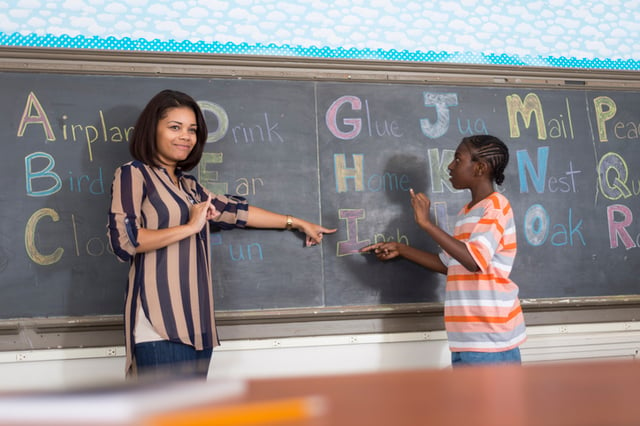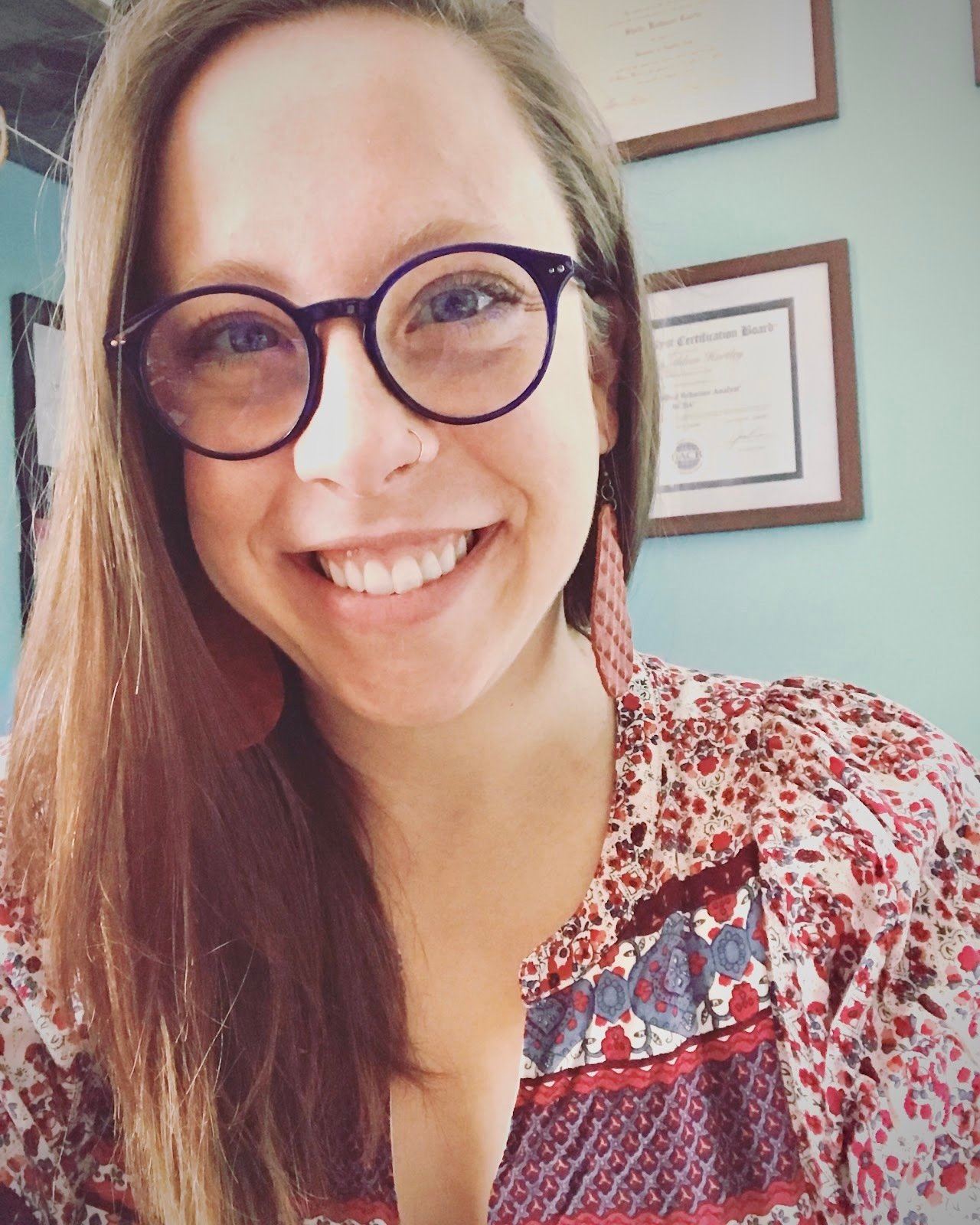Can Sign Language Help Autistic Early Learners Develop Communication Skills?
The short answer is Yes! There is strong research support for teaching sign language to all young children, autistic or non-autistic. Sign language can be used to help encourage verbal language development, but it should not be used as a replacement for teaching children to speak. In some cases, speech-language therapists and parents will use sign language as an alternative to speech for non-verbal autistic children.
How Can I Get Started With Teaching My Child or Student Sign Language?
It’s best to use simple nouns and actions when first introducing sign language to a young learner. Focus on things that they enjoy and frequently use, such as water, milk, balls, cars, and crackers. Do not teach more abstract signs such as “more” until several signs have been established. The goal is to help them generalize their requests across people and environments and others must understand what the child is asking for, instead of guessing what they want “more” of.
Babysignlanguage.com
This website is a fantastic resource for visually referencing a variety of signs. They have pictures and videos to demonstrate how to accurately use sign language. There are also printable resources that can be used in the home and school environments to provide a model and prompt to use signs throughout the day!
Children’s Books
Several children’s books incorporate sign language to take a multimodal approach to literacy. Here are a few of my favorites!
- Signs About Mealtime by Anthony Lewis
- My First Book of Baby Signs by Lane Rubelo
- Nita’s Day by Kathy MacMillan
There is a sign for almost everything. Incorporate sign language whenever possible in all daily activities. If you don’t know the corresponding sign, that’s okay! Show your children that you are always learning and model curiosity and problem solving such as “The sun is bright today. I wonder how to say ‘sun’ in sign language. Let’s look it up!” This is a fun and interactive way to help your little one take an active role in the research process.
YouTube
YouTube has a variety of songs and books that are sung/read aloud with sign language modeled alongside the spoken words. Here are a few fun examples!
Baby Shark - Baby Shark in ASL (American Sign Language) | Original Version
The Wheels on the Bus - Wheels on the Bus (Play Version) | MyGo! Sign Language For Kids | CoComelon | ASL
Kindness is My Superpower - ASL Storytelling: Kindness is My Superpower
Peppa Pig and the Day at Snowy Mountain - Peppa Pig and The Day at Snowy Mountain Book Read Aloud ASL Stories For Kids\Sign Language for Kids.
The Very Hungry Caterpillar - The Very Hungry Caterpillar in American Sign Language
When and Where Should a Child Use Sign Language?
Sign language should be used anywhere at any time! Introduce it as early as possible for the best impact on communication development. I recommend starting around six months of age or when you begin introducing new foods. This is around the time that babies are starting to show more preferences for toys, as well. Focus on fun and social parts of the day, such as meals, bathtime, and playtime.
Sign language provides a shared functional communication approach to help young learners and parents understand each other. Introducing sign language to infants and toddlers is correlated with higher intellectual intelligence, verbal language development, joint attention skills, and improved parent-child interactions.
Early introduction of sign language paired with verbal language can have a significant impact on expressive and receptive communication skills, the foundation of all learning and social interaction. If your child likes to play with a ball, verbally label the “ball” and show the sign for “ball.” You can say “Look! We are using the red ball!” Throughout play, you can hold the ball and say “What do you want to play with?” Help them make a verbal approximation for “ball” and gently guide them to make the physical sign for ‘ball.” At mealtime, you can say “I’m hungry. Do you want to eat?” while showing the sign for “eat.” Practice labeling food and drinks such as apples, cookies, and milk. Your child will be more excited to use sign language and verbal approximations when you show enthusiasm during the communication process. Make it fun!
At approximately one year of age, a toddler begins pointing to items in their environment in an attempt to engage others and gain access to desired items. This skill is known as joint attention and is often a developmental delay seen in autistic children. There is a positive correlation between a child’s use of symbolic gesturing and their verbal language development; the number of symbolic gestures that a child uses to communicate at 19 months is predictive of their verbal language vocabularies at 19 and 24 months. Teaching sign language to young learners and those who haven’t yet developed verbal language provides a form of functional communication that supports the development of verbal language.
It’s often assumed that people must make eye contact when speaking to others. This is not true and it’s often uncomfortable to make eye contact, especially for autistic learners. Sign language provides the opportunity for communicating while focusing on finger movements of expression rather than eye contact. This may make it easier for autistic children to learn to communicate.

Sign language has been proven to be especially effective for early learners whose verbal language is not clearly understood by others or whose echoic (representing a sound by imitation) repertoire is not yet developed. Keep in mind that sign language may not be an effective means of communication for children who have limited fine motor abilities or severely impaired imitation skills. Instead, a picture exchange or augmentative communication device may be more appropriate as a supplement for verbal language development.
Teaching sign language to young learners, including autistic children, can have strong and lasting positive impacts on verbal language development. It is critical to remember that sign language should not be viewed as a replacement for verbal language; it’s a functional form of communication that can be generalized across people and environments to give children a way to communicate. Follow your child’s interests and use their preferred items and activities to engage together and build up their verbal and sign language!
What has your experience been in teaching your child sign language? Please share your experiences in the comment section below.
We hope you enjoyed the information in this article. STAGES® Learning also offers free downloadable resources to support teaching and learning with autistic individuals. Start with our free Picture Noun Cards and see our collection of other downloadable resources here!
This article was based on research by:
Acredolo, L. P. (2009). Baby signs: How to talk with your baby before your baby can talk. McGraw Hill Contemporary Learning.
Dimitrova, N., & Özçalışkan, Ş. (2022). Identifying patterns of similarities and differences between gesture production and comprehension in autism and typical development. Journal of Nonverbal Behavior, 46(2), 173–196.
Goodwyn, S. W., Acredolo, L. P., & Brown, C. A. (2000). Journal of Nonverbal Behavior, 24(2), 81–103.

Sheila Hartley, MS, BCBA, LBA
Sheila is an Early Childhood Education Consultant, BCBA, and the owner of SenseSational Learning Group LLC. She specializes in Naturalistic Developmental Behavioral Interventions. Play based learning is her passion and she gathers inspiration from the Reggio Emilia and Montessori approaches to early childhood education. She will graduate in 2023 with a Doctorate of Education in Early Childhood Education.




